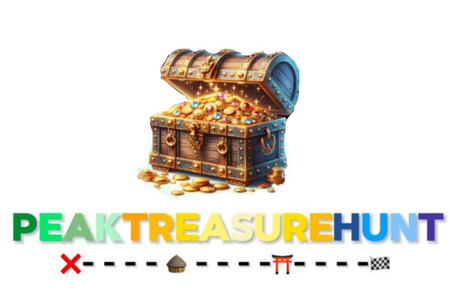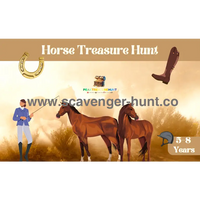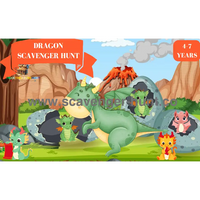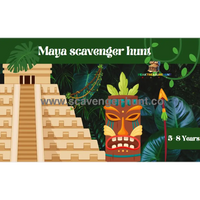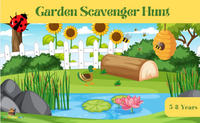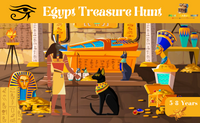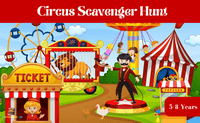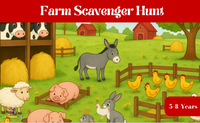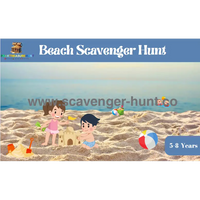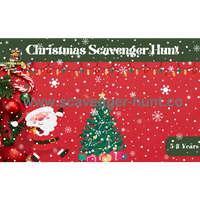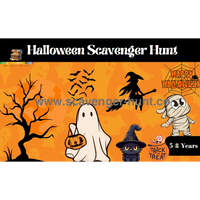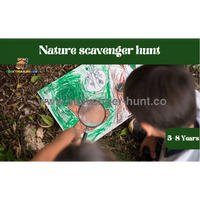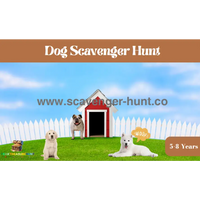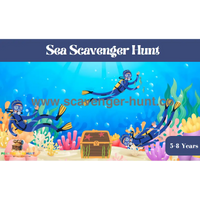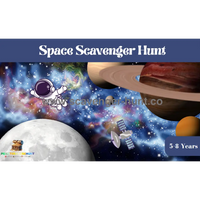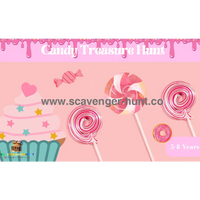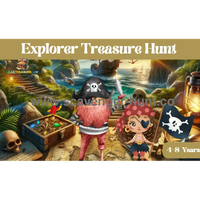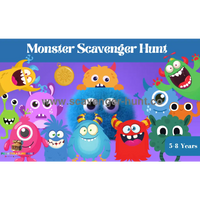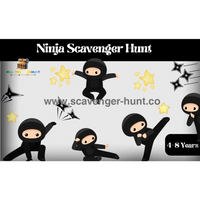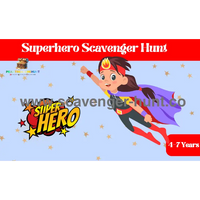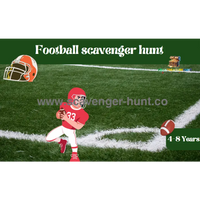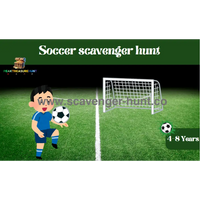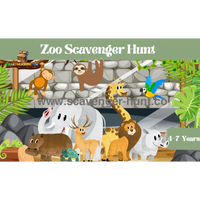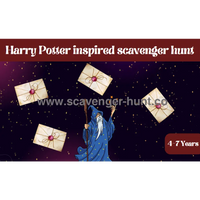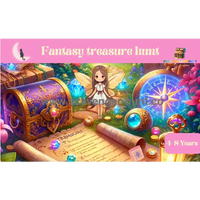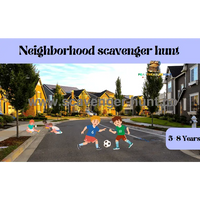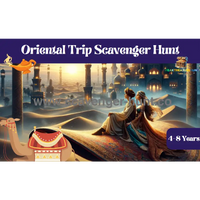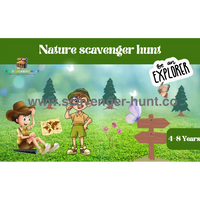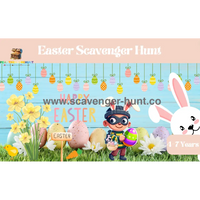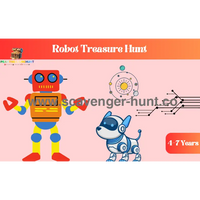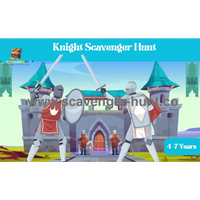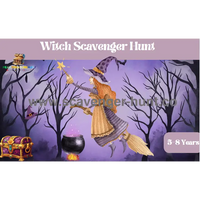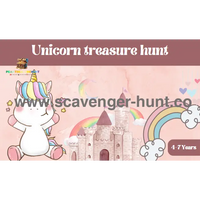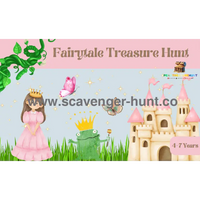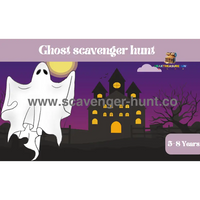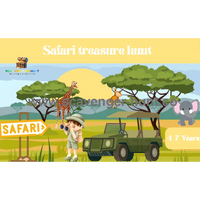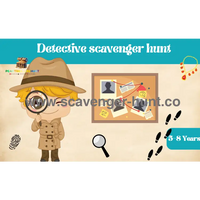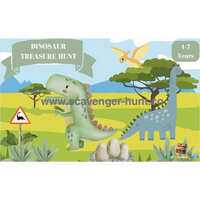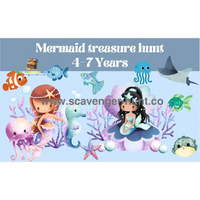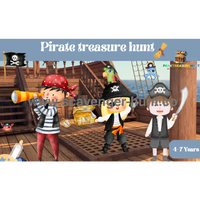There's something absolutely magical about treasure maps that captures children's imaginations like few other activities can. The combination of creativity, storytelling, and adventure planning makes map-making one of the most engaging and educational craft activities you can do with kids. Whether you're preparing for a birthday party, looking for a rainy day activity, or wanting to spark your child's creativity, making treasure maps together creates lasting memories while developing important skills.
Creating treasure maps with children goes far beyond simple arts and crafts. This activity naturally incorporates geography concepts, spatial reasoning, artistic expression, storytelling, and problem-solving skills. Children learn about symbols, directions, scale, and planning while having incredible fun. The best part? Every map is completely unique, reflecting each child's personality and imagination.
Getting Started: Essential Materials and Tools
Before diving into the creative process, gather your materials. The beauty of treasure map making is that you probably already have most of what you need at home. You don't need expensive art supplies to create amazing maps that look authentically aged and mysterious.
Basic Materials You'll Need:
- White paper (regular printer paper works perfectly)
- Tea bags or coffee (for aging the paper)
- Crayons, colored pencils, or markers
- Brown and black pens or pencils
- A hair dryer (optional, for faster drying)
- Small sponges or cotton balls
- Rulers or straight edges
- Pencil erasers
Optional Enhancement Materials:
- Gold or silver markers for special details
- Stickers (stars, gems, or pirate-themed)
- Red ribbon or string
- Wax crayons for special effects
- Glitter glue for magical touches
- Small stamps or stencils
The key is to have everything ready before you begin, so the creative flow isn't interrupted by searching for materials. Set up a dedicated workspace where children can spread out and get creative without worrying about making a mess.
Step-by-Step Guide to Aging Paper
The first step in creating an authentic-looking treasure map is aging the paper to give it that ancient, weathered appearance that makes any map look like it's been hidden for centuries. This process is often the most exciting part for children, as they watch ordinary white paper transform into something that looks genuinely old and mysterious.
The Tea Staining Method:
Start by brewing several strong cups of tea using regular black tea bags. Allow the tea to cool to a comfortable temperature for handling. Lay your paper flat on a protected surface, like a plastic tablecloth or large tray. Using a sponge or cotton ball, gently dab the tea onto the paper, covering the entire surface. Don't worry about making it perfectly even – irregular staining adds to the authentic aged look.
For darker areas that suggest more age and wear, apply the tea more heavily around the edges and in certain spots. Some children love creating deliberate "stains" that tell a story – perhaps a coffee ring from a pirate's mug or water damage from ocean spray. Allow the paper to air dry completely, or use a hair dryer on a cool setting to speed up the process.
The Coffee Method:
For a darker, more dramatic aging effect, brew strong coffee and apply it using the same technique as tea. Coffee creates deeper brown tones and can give your map a more dramatically aged appearance. Some families like to use both tea and coffee on the same map, creating varied tones and depths of aging.
Burn Effect Technique (Adult Supervision Required):
For older children and with careful adult supervision, you can create realistic burned edges by carefully holding the paper near (not touching) a candle flame. Move the paper slowly to create irregular burned edges. This technique requires constant adult supervision and should never be attempted by children alone. An alternative is to tear the edges by hand to create a weathered, damaged appearance.
Planning Your Map Layout
Before putting pen to paper, spend time with your child planning the layout and story of their treasure map. This planning phase is crucial because it helps children think through the logical flow of their adventure and consider how someone else would use their map to find the treasure.
Start with the Story:
Every great treasure map begins with a story. Encourage your child to think about who made this map, why they hid the treasure, and what kind of treasure it might be. Is it a pirate's buried gold? A fairy's hidden magical artifacts? A time traveler's important documents? The story will influence every element of the map, from the style of drawing to the types of landmarks included.
Consider the Setting:
Where does this treasure hunt take place? Is it on a tropical island, in a mysterious forest, around your own neighborhood, or in a fantastical imaginary world? The setting determines what kinds of landmarks and features will appear on the map. A pirate island might have palm trees, caves, and rocky shores, while a forest adventure might include ancient trees, streams, and hidden clearings.
Plan the Route:
Help your child think through the logical progression from start to finish. Where does the adventure begin? What landmarks will guide the treasure hunter along the way? How will they know they're going in the right direction? This planning develops logical thinking and helps children understand cause and effect relationships.
Drawing Techniques and Map Elements
Now comes the exciting part – actually creating the map! This is where children's creativity really shines, and where you can help them learn about different map-making conventions while encouraging their artistic expression.
Starting with Basic Shapes:
Begin by lightly sketching the overall shape of your map area in pencil. If it's an island, draw the coastline. If it's a forest, outline the general boundaries. These initial shapes provide a framework for adding details and help children understand the concept of boundaries and enclosed spaces.
Adding Landmarks:
Landmarks are the heart of any treasure map. These are the recognizable features that help treasure hunters navigate from one point to another. Encourage your child to include a variety of different types of landmarks: natural features like trees, rocks, and water bodies; man-made structures like buildings, bridges, or fences; and special or magical elements that fit their story.
Using Map Symbols:
This is a wonderful opportunity to introduce children to the concept of symbols and how they're used to represent real things on maps. Show them how cartographers use simple drawings to represent complex features. A triangle might represent a mountain, wavy lines could show water, and small circles might indicate towns or important locations.
Creating a Legend:
Help your child create a legend or key that explains what different symbols on their map represent. This exercise reinforces the connection between symbols and meaning while making the map more usable for others. The legend can be decorated with the same artistic flair as the rest of the map.
Advanced Decoration Techniques
Once the basic map structure is complete, it's time to add the decorative elements that really bring the map to life. These finishing touches transform a simple drawing into a work of art that children will be proud to display and use.
Compass Rose Creation:
Every proper treasure map needs a compass rose to show directions. Start with a simple cross showing North, South, East, and West, then add decorative elements around it. Children can create elaborate designs with flowing ribbons, decorative points, or even themed elements like anchors for pirate maps or flowers for fairy maps.
Border Designs:
Decorative borders frame the map and add to its authentic appearance. Simple rope patterns work well for pirate themes, while vine and flower borders suit fairy or forest themes. Geometric patterns can work for more modern or scientific themes. The border also helps define the map area and gives it a finished, professional appearance.
Special Effects:
This is where creativity really takes flight. Red dotted lines can show the path to the treasure. Small illustrations can bring landmarks to life – palm trees swaying in the wind, caves with mysterious shadows, buildings with detailed architecture. X marks the spot, of course, but it can be decorated with additional elements like radiating lines, circles, or even small illustrations of the treasure itself.
Age-Appropriate Variations
Different age groups benefit from different approaches to treasure map making. Tailoring the activity to your child's developmental stage ensures they remain engaged and challenged without becoming frustrated.
Ages 3-5: Simple and Sensory
Very young children enjoy the sensory aspects of map making most. Focus on the paper aging process, which provides wonderful tactile experiences. Keep the actual map drawing simple with large, basic shapes and bright colors. Use stickers extensively to create landmarks and decorative elements. The emphasis should be on the process rather than the final product.
Ages 6-8: Building Skills
This age group can handle more complex planning and execution. They can participate fully in the aging process and begin to understand basic map concepts like scale and symbols. Encourage them to include more detailed landmarks and to think about how someone else would use their map. They can begin to write simple clues or instructions on their maps.
Ages 9-12: Advanced Techniques
Older children can create sophisticated maps with complex storylines, detailed illustrations, and advanced aging techniques. They can incorporate measurement concepts, create elaborate legends, and even design multi-stage treasure hunts with multiple maps. This age group often enjoys creating maps for others to use, understanding the importance of clear communication and logical progression.
Teen Adaptations:
Teenagers might approach treasure mapping as a design challenge or historical recreation project. They could research authentic historical maps and try to recreate specific cartographic styles, or use the activity as part of creative writing projects where the map serves as a visual aid for their stories.
Educational Benefits and Learning Opportunities
Treasure map making offers remarkable educational value across multiple subject areas. Understanding these benefits can help you maximize the learning potential while maintaining the fun, creative spirit of the activity.
Geography and Spatial Skills:
Creating maps naturally introduces children to fundamental geography concepts. They learn about spatial relationships, directions, scale, and the relationship between real places and their representations on paper. These skills form the foundation for more advanced geographic understanding and map reading abilities.
Mathematical Concepts:
Map making incorporates measurement, scale, geometry, and spatial reasoning. When children plan their maps, they're unconsciously working with concepts of proportion, distance, and mathematical relationships. Adding a grid system or scale can make these mathematical elements more explicit.
Language Arts Integration:
Maps tell stories, and creating them provides wonderful opportunities for vocabulary development, storytelling, and written communication. Children can write descriptions of their maps, create backstories for their treasures, or develop detailed instructions for treasure hunters.
Problem-Solving and Logic:
Designing a functional treasure map requires logical thinking and problem-solving skills. Children must consider how their map will be used, what information is essential, and how to communicate clearly through symbols and illustrations.
Creative Themes and Inspiration
While pirate treasure maps are classic and beloved, there are countless other themes that can inspire unique and engaging map-making experiences. Different themes can appeal to different interests and learning objectives.
Historical Adventures:
Create maps inspired by different historical periods. Ancient Egyptian maps could lead to hidden pyramids, medieval maps might guide knights to rescue missions, or Wild West maps could chart paths through frontier territories. These themed approaches naturally incorporate historical learning and cultural awareness.
Fantasy and Mythology:
Dragons' lairs, fairy kingdoms, magical forests, and enchanted castles provide rich inspiration for fantasy-themed treasure maps. Children can incorporate mythical creatures, magical landmarks, and fantasy elements that stretch their imaginative capabilities.
Science and Nature:
Maps don't always have to lead to gold and jewels. Nature treasure maps could guide explorers to special plants, animals, or geological features. Science fiction maps might chart courses through space or lead to important scientific discoveries.
Neighborhood Adventures:
Creating maps of familiar places like your neighborhood, school, or local park helps children connect map-making skills to their real world. These maps can highlight favorite places, hidden gems, or special memories associated with different locations.
Using Your Finished Treasure Maps
Creating the map is only half the adventure – using it brings the experience full circle and provides additional learning and fun opportunities. The way you use the completed map can extend the educational value and create lasting memories.
Organizing Treasure Hunts:
Use the completed maps to organize actual treasure hunts, either indoors or outdoors depending on the map's design. Hide small treasures or prizes at the locations marked on the map, and let children follow their own creation to find the rewards. This experience helps them understand the practical purpose of maps and provides immediate feedback on how well their map communicates information.
Storytelling Props:
Finished maps make excellent props for storytelling activities. Children can use their maps as visual aids while telling adventure stories, either to family members or friends. This integration of visual art and oral storytelling develops multiple communication skills simultaneously.
Display and Sharing:
Treasure maps are natural conversation starters and make excellent room decorations. Consider framing particularly special maps or creating a rotating display where different family members' maps are featured. Sharing maps with friends and extended family members helps children feel proud of their creative achievements.
Gift Giving:
Handmade treasure maps make thoughtful, personal gifts for friends and family members. Children can create maps that lead to special places meaningful to the recipient, or design fantasy adventures specifically tailored to someone else's interests.
Troubleshooting Common Challenges
Even with the best planning, creative projects sometimes encounter obstacles. Being prepared for common challenges helps ensure that the treasure map making experience remains positive and productive.
Perfectionism Problems:
Some children become frustrated when their maps don't look exactly like they imagined. Remind them that the most authentic-looking treasure maps are imperfect and weathered. Emphasize the creative process over the final product, and celebrate unique artistic choices rather than technical perfection.
Attention Span Issues:
Map making can be a lengthy process, especially with the aging and drying time involved. Break the activity into multiple sessions if needed. You might age the paper one day and draw the map another, or work on different sections over several shorter periods.
Mess Management:
Tea and coffee staining can be messy, especially with younger children. Prepare your workspace thoroughly with protective coverings, have cleanup supplies readily available, and consider doing the aging process outdoors or in easily cleaned areas.
Skill Level Mismatches:
When working with children of different ages simultaneously, ensure everyone has age-appropriate tasks. Younger children can focus on coloring and sticker placement while older children handle more detailed drawing and planning responsibilities.
Advanced Projects and Extensions
Once children master basic treasure map making, there are numerous ways to extend and expand the activity to maintain interest and continue learning.
Multi-Map Adventures:
Create treasure hunt series where each map leads to the next, building complex, multi-stage adventures. This approach develops sequential thinking and allows for more elaborate storytelling.
Historical Research Projects:
Encourage older children to research actual historical treasure maps and famous treasure hunting expeditions. They can try to recreate historical cartographic styles or create maps inspired by real historical events.
Digital Integration:
Combine traditional map making with modern technology by photographing completed maps and creating digital treasure hunts using QR codes or GPS coordinates. This integration shows children how traditional skills connect to modern applications.
Community Projects:
Organize treasure map making activities for birthday parties, scout groups, or classroom projects. Sharing the activity with others builds social skills and allows children to see different creative approaches to the same basic activity.
Conclusion: The Lasting Magic of Handmade Adventures
Making treasure maps with children creates far more than just colorful pieces of paper. These collaborative creative experiences build relationships, develop skills, and create lasting memories that families treasure for years to come. The combination of artistic expression, logical planning, and imaginative storytelling makes treasure map making a uniquely rich and rewarding activity.
The skills children develop through treasure map making extend far beyond the craft table. They learn to plan and organize their thoughts, communicate ideas visually, solve problems creatively, and work collaboratively with others. These are life skills that will serve them well in many future endeavors.
Perhaps most importantly, treasure map making validates children's creativity and imagination. In a world that often emphasizes standardized answers and conventional thinking, this activity celebrates unique perspectives and personal expression. When children see adults taking their creative ideas seriously and helping bring their visions to life, it builds confidence and reinforces the value of their imaginative contributions.
The maps themselves become keepsakes that capture specific moments in a child's development. Years later, families often rediscover these treasured creations and remember not just the finished product, but the laughter, conversation, and shared creativity that went into making them. In this way, the real treasure isn't buried at X marks the spot – it's found in the precious time spent creating and exploring together.
So gather your tea bags and markers, spread out some paper, and prepare to embark on a creative adventure that will entertain, educate, and inspire. The treasure you'll discover through this simple activity – strengthened relationships, developed skills, and cherished memories – will prove more valuable than any pirate's gold.
